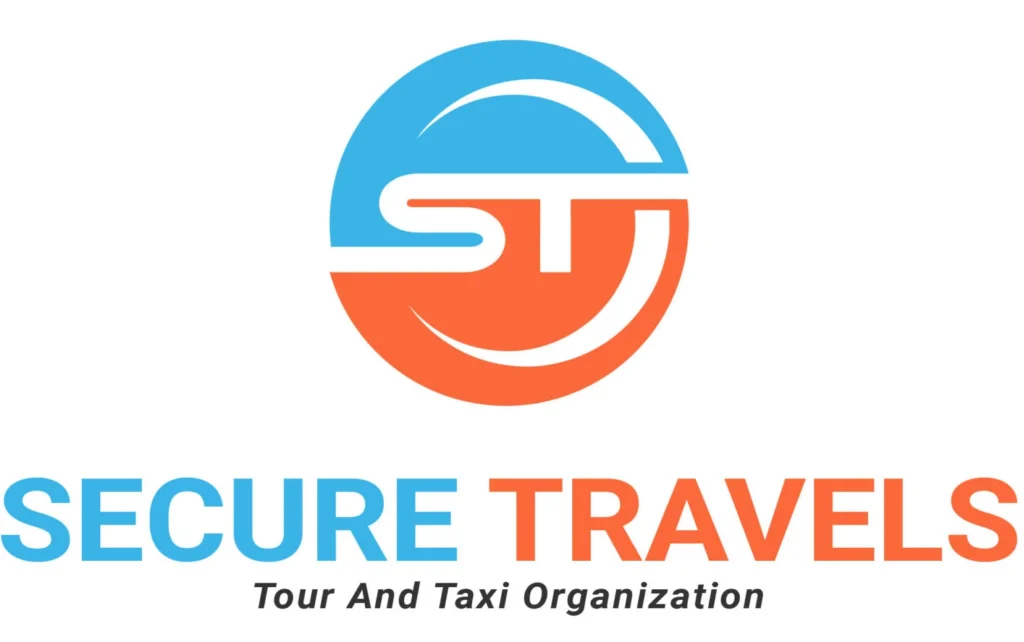Valley Of Flowers & Hemkund Sahib
Book your tour via whatsapp
Overview
- Region : Uttarakhand
- Duration : 6 Days
- Altitude: 14,000 Ft.
- Base Camp : Govind Ghat
- Best Time to Visit : June To Sep
 VALLEY OF FLOWERS TREK OVERVIEW
VALLEY OF FLOWERS TREK OVERVIEW
The Valley of Flowers is one of the most famous and scenic treks in Uttarakhand, India.
This high-altitude Himalayan valley, located in the Chamoli district at an elevation of approximately 3,658 meters (12,000 feet) above sea level, is renowned for its stunning natural beauty. Hundreds of different species of wildflowers bloom during the monsoon season. This area changes every year from mid-June to mid-September into a colorful carpet of alpine flowers encircled by snow-capped peaks, glaciers, and waterfalls.
Trekkers are drawn to the Valley of Flowers National Park not only because of its breathtaking scenery but also because of its peaceful atmosphere, lack of cell service, and unadulterated connection to nature. This valley’s ecological significance and biodiversity are so exceptional that it has been designated a UNESCO World Heritage Site and is a part of the Nanda Devi Biosphere Reserve.
To reach the Valley of Flowers, you’ll first travel to Govindghat, which is accessible by road from Haridwar, Rishikesh, and Dehradun. From there, you’ll trek via Pulna to the small settlement of Ghangaria, which serves as the base camp for both the Valley of Flowers and Hemkund Sahib, the highest Gurudwara in the world. The trek from Ghangaria to the actual valley is around 3.5 to 4 km one way, and though the route is not too steep, it can be slippery during rains, so proper trekking shoes are important.
The Valley of Flowers Trek is a fantastic choice for novices, families, and nature enthusiasts because it is rated as easy to moderately difficult. This trek is unique because you’re walking through beauty rather than to a summit. You’ll see tiny glaciers, cross wooden bridges, go by the Pushpawati River, and take in an unspoiled natural setting that varies in hue each week based on the flowers that are in bloom.
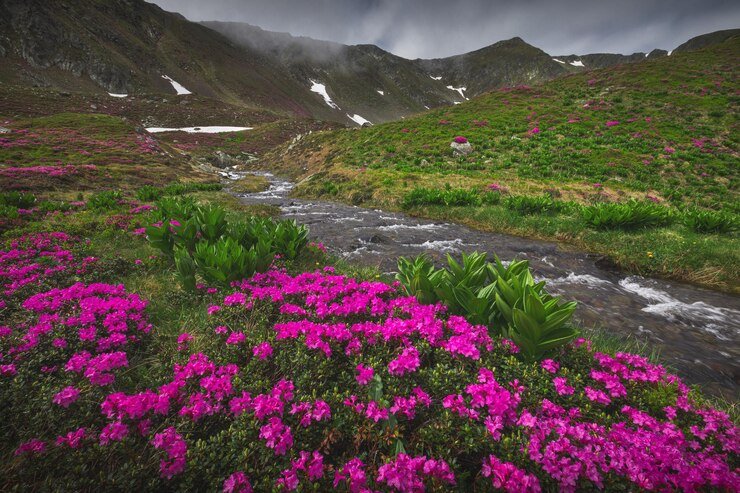
Nearly 498 of the more than 520 plant species that have been identified in this valley are flowering plants. Blue poppies, vajradanti, cobra lilies, marsh marigolds, and brahma kamal are a few noteworthy flowers. Rare animals like the snow leopard, musk deer, blue sheep, Asiatic black bear, and numerous bird and butterfly species can be found in this area in addition to its abundant flora. Even though there is no guarantee of seeing these animals, their presence enhances the biodiversity of the trek.
Hemkund Sahib, a Sikh holy site, is another popular destination close to the valley. Standing at 4,328 meters, it is encircled by a glacial lake and seven snow-capped peaks. Trekkers frequently combine their visit to the Valley of Flowers with a hike to Hemkund Sahib, which is typically completed the day after the valley visit. The Hemkund trail is more difficult and steeper, but it is well worth the effort because it provides a completely different spiritual experience.
Ghangaria offers basic lodges, guesthouses, and a GMVN rest house for trekkers. It’s a real digital detox because there is little access to electricity or a mobile signal—only BSNL occasionally works here. Hemkund Sahib Gurudwara serves langar (free meal), and the food options are straightforward and vegetarian, typically consisting of dal, rice, sabzi, and roti.
The Valley of Flowers is in full bloom from mid-July to late August, making this the ideal time of year to visit. The first flowers appear in early June, when the snow begins to melt. The flowers begin to fade by September, but the trail is quieter and fewer people are there.
To put it briefly, the Valley of Flowers Trek is the ideal option if you’re searching for a hike that isn’t about exhilaration but rather about taking it slow, enjoying the scenery, and traversing what seems like a different planet. It’s an experience that makes you feel small in the best way possible, not just a trek.
What is special about Valley of flowers trekking packages ?
One of the few treks that is both safe and accessible during the monsoon season
One of India’s most picturesque valleys
UNESCO World Heritage Site
There are 529 flower species with therapeutic uses.
Hemkund Sahib, the tallest Gurudwara in the world, is also arguably the most exquisite.
Excellent for hikers of all skill levels, from novice to expert
A valley that turns pink in August, blue in July, and white in June
The best months to go are July and August, when the greatest variety of flowers are in bloom.
Short Itinerary
VALLEY OF FLOWERS TREK SHORT INTINERY
| Day | Route | Altitude (ft) | Notes |
|---|---|---|---|
| Day 1 | Rishikesh to Govindghat/Pandukeshwar (263 Kms, 9 Hrs Drive Approx) | 6,000 | Scenic drive along Alaknanda River |
| Day 2 | Govindghat/Pandukeshwar (2Kms, 10 Min Drive) | Trek to Ghangaria (10-11 km Kms, 6 Hrs trek Approx) | 10,000 | Gradual uphill walk, mule/porter available |
| Day 3 | GHANGARIA TO VALLEY OF FLOWERS | BACK TO GHANGARIA (10 Kilometers, 7 Hours Drive Approx) | 12,000+ | Full-day trek into valley and return to base |
| Day 4 | Ghangaria to Hemkund Sahib (Back) | 14,100 | Optional but recommended, tough ascent |
| Day 5 | Trek back Ghangaria to Pulna (9 Kms, 5 Hrs Approx) | Drive to Govidghat/Pandukeshwar (22 Kms, 1 Hr Drive Approx) | 6,000 | Easy return trek |
| Day 6 | Govindghat to Rishikesh (Drive) | – | End of trek |
 DETAILED ITINERARY FOR VALLEY OF FLOWERS TREK
DETAILED ITINERARY FOR VALLEY OF FLOWERS TREK
Day 1:Rishikesh to Govindghat/Pandukeshwar (262 Kms, 10 Hrs Drive Approx)
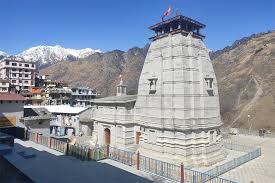
Travel itinerary: Rishikesh to Devprayag, Rudraprayag, Pandukeshwar, Govindghat
Accommodations: Simple hotel/guesthouse
Leave early from Rishikesh or Haridwar. The drive is lengthy but beautiful. You will traverse numerous mountain bends and river confluences. To get to Govindghat before sunset, it is best to depart between 5 and 6 AM.
In Govindghat, lodging is basic but adequate. Here, stock up on necessities.
 Day 2: Govindghat/Pandukeshwar (2Kms, 10 Min Drive) | Trek to Ghangaria (10-11 km Kms, 6 Hrs trek Approx)
Day 2: Govindghat/Pandukeshwar (2Kms, 10 Min Drive) | Trek to Ghangaria (10-11 km Kms, 6 Hrs trek Approx)
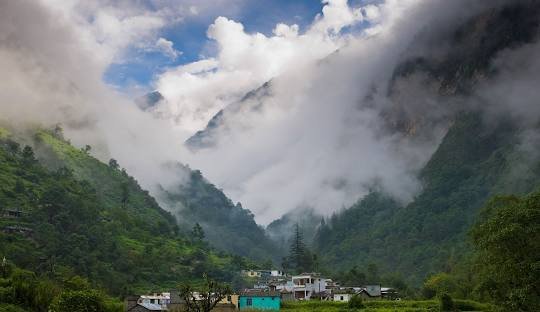
Gain in elevation: about 4,000 feet
Stay: Ghangaria Lodge/Guesthouse
After breakfast, begin your hike. The trail begins in Pulna village, which is three kilometers away by car from Govindghat. You then stroll alongside the Lakshman Ganga River. The route combines natural terrain with paved trails.
If you don’t want to carry a backpack, there are porters and mules available. There are food stands dotted along the way, and the ascent is gradual.
By the afternoon, you arrive at Ghangaria, a tiny seasonal community that serves as the starting point for Hemkund Sahib and the Valley of Flowers. Here, mobile networks are inconsistent.
Day 3: From Ghangaria to the Valley of Flowers and Back
6 km one way is the trek distance.
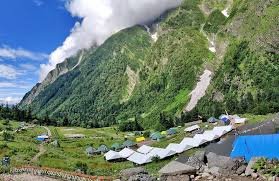
Elevation: approximately 12,000 feet
Time: six to seven hours total
The highlight is today. Get your permit (available at the forest check post), start your hike, and get up early.
Gradually, the trail climbs into Valley of Flowers National Park. Following a first steep area, the valley spreads out, encircled by peaks and teeming with blooming wildflowers.
The valley is divided into several sections; continue on to the grave of Joan Margaret Legge, a botanist who passed away here in 1939.
By late afternoon, return to Ghangaria. The majority of hikers claim that this day alone makes the entire journey worthwhile.
 Day 4: Hemkund Sahib to Ghangaria and Back (Optional but Valuable)
Day 4: Hemkund Sahib to Ghangaria and Back (Optional but Valuable)
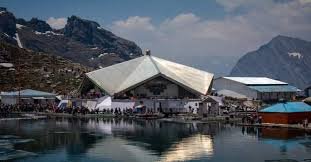
6 km one way (steep climb) is the trek distance.
14,100 feet is the highest point on the journey.
Time: seven to eight hours total
Today is more difficult. The 6 km hike to Hemkund Sahib entails a steep ascent of roughly 4,000 feet.
Go slowly and drink plenty of water. There is a Sikh shrine at Hemkund, a high-altitude glacial lake. There are plenty of pilgrims. Take breaks if you feel like you’re having trouble breathing.
The Gurudwara serves a straightforward and substantial langar (community meal).
By evening, head back down to Ghangaria. Although it is the most physically taxing day, it is also the most spiritually potent.
 Day 5: Govindghat/Pandukeshwar TO RISHIKESH (262 Kilometers, 8 Hours Drive Approx)
Day 5: Govindghat/Pandukeshwar TO RISHIKESH (262 Kilometers, 8 Hours Drive Approx)
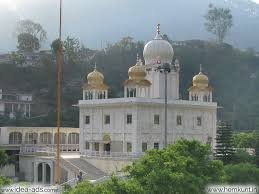
Duration: four to five hours
Though it’s easier going downhill, the trail is identical to Day 2. You can arrive in Govindghat by lunchtime even if you start late in the morning.
For better accommodations, some groups choose to stay in Govindghat/Pandukeshwar. Logistics will determine that.
 Day 6: 10-hour drive from Govindghat to Rishikesh
Day 6: 10-hour drive from Govindghat to Rishikesh
Trek’s End Make a stop for the night in Rishikes to break up this journey if you’re exhausted.
| Category | Info |
|---|---|
| Total Trek Distance | ~38 km (Govindghat → Valley/Hemkund round) |
| Max Altitude | 14,100 ft (Hemkund Sahib) |
| Best Time | Mid-July to Mid-August |
| Network Availability | Patchy post-Govindghat |
| Trek Level | Easy to Moderate |
| Permit Required | Yes (Valley Entry) |
| Weather | 10°C to 20°C (Day), 5°C to 8°C (Night) |
How to Reach Valley Of Flowers Trek ?
Although getting to the Valley of Flowers isn’t difficult, it does require preparation, perseverance, and a lengthy drive. The main base, Govindghat, must be reached before the trek officially begins in the small village of Pulna.
Let’s clearly divide it up by mode of transportation
 BY ROAD: THE MOST COMMON AND EFFECTIVE
BY ROAD: THE MOST COMMON AND EFFECTIVE
To get to Govindghat, you must first travel to Haridwar or Rishikesh, both of which have excellent connections.
Route: Copy Edit Haridwar/Rishikesh → Devprayag → Rudraprayag → Karnaprayag → Joshimath → Govindghat
Distance: approximately 275–300 km
Driving time: nine to ten hours
Mountain roads are winding but generally well-maintained.
Choices:
Shared Jeep: Available in the morning from Rishikesh or Haridwar (from the GMOU bus stop or the Natraj Chowk stand).
Private taxi: ₹6000–₹8000 (comfortable for 4–5 people, one-way)
Bus: There aren’t many government buses, mainly to Joshimath; you’ll still need to take a taxi to Govindghat.

 BY FLIGHT—PARTIAL, NOT DIRECT
BY FLIGHT—PARTIAL, NOT DIRECT
Although there isn’t a direct airport to Valley of Flowers, you can still do the following:
Jolly Grant Airport in Dehradun is the closest airport.
flights every day from places like Bangalore, Mumbai, and Delhi.


Take a taxi or drive the approximately 300 kilometers (10 hours) to Govindghat.
Note: Air taxis and helicopters are not allowed.
 BY TRAIN: A FINDING CHOICE
BY TRAIN: A FINDING CHOICE
Haridwar is the closest major station.
Another option is Rishikesh (Yog Nagari Rishikesh station), a new station near the roadhead with fewer trains.
Proceed to Govindghat (as above) by road from here.

 FINAL LEG: FROM GHANGARIA TO GOVINDGHAT
FINAL LEG: FROM GHANGARIA TO GOVINDGHAT
Your trekking adventure starts once you arrive at Govindghat:
From Govindghat, take a motorable road to Pulna Village (2 km). There are shared jeeps available.
Trekking 10 km from Pulna to Ghangaria:
Mules use the paved trail.
Porters and mules are on hand to help with luggage and other tasks.

| Step | Action |
|---|---|
 Step 1 Step 1 | Reach Haridwar/Rishikesh via train or flight |
 Step 2 Step 2 | Drive or take shared transport to Govindghat (10 hrs) |
 Step 3 Step 3 | Short ride to Pulna (2 km) |
 Step 4 Step 4 | Trek 10 km to Ghangaria (your base camp) |
 Step 5 Step 5 | Trek to Valley of Flowers & Hemkund Sahib |
 THINGS TO KEEP IN MIND
THINGS TO KEEP IN MIND
No ATMs after Joshimath – withdraw cash early
Fuel up in Joshimath – no petrol pump at Govindghat
Carry snacks/water – long stretches with no shops
Mountain roads close early in monsoon – start early every day
 FINAL TIP
FINAL TIP
If you’re coming from Delhi NCR, a good route is:
Overnight train → Haridwar
Cab/share jeep → Govindghat (10 hrs)
Night stay → Start trek next morning
Or join a group tour where all logistics—stay, permits, transport—are pre-arrange
Inclusions:
Transportation (According to Itinerary)
Accommodation. (Guest house, Home stay, Camping)
Meals while on trek (Veg.+ Egg)
All necessary permits and entry fees.
First aid medical kits, stretcher and oxygen cylinder.
Mountaineering qualified & professional trek Leader, guide and Support staff.
7. 5 % GST.
Exclusions:
Any kind of personal expenses.
Food during the transit.
Insurance.
Mules or porter to carry personal luggage.
Anything not specifically mentioned under the head.
Any kind of emergency evacuation charges.
Note:
Normally Trip on Himalaya expect to carry your personal luggage on your own; however, if you wish to offload your backpack, you can give it to a Mule.
Charges of offloading backpack:-
INR 1200/- if you make an online payment, 10 days in advance
The backpack cannot weigh more than 11 kgs. Backpack should have waterproof cover.
Suitcases/strolleys/ bags will not be allowed.
Paying the Trek/ Adventure activity fee:
The fee can be paid by online transfer/check deposit/ demand draft. Instruction for payment will be forwarded along with your confirmation email. When your transfer is done, please email us a confirmation mail with your transfer details, so that we can follow up your reservation efficiently.
When to Book:
It is wise to make your booking at least two months in advance. However, if you want a good deal on your domestic/international flight, we recommend organising your trip at least five months in
advance.Customer is suppose to make a full payment in advance for the confirm bookings. If in case a confirmed booking needs to be cancel than below are the refund policies Terms for Cancellation & Refund:
Prior 30 days of the confirmed date, 50% of the total amount would be refunded
Prior 25 days of the confirmed date, 40% of the total amount would be refunded
Prior 20 days of the confirmed date, 30% of the total amount would be refunded
Prior 15 days of the confirmed date, 20% of the total amount would be refunded
Prior 10 days of the confirmed date, 0% of the total amount would be refunded
Trek Essentials
Trekking Gear
Ruck sack bag with rain cover. Qty -1
Day Pack Bag – Recommended for treks with summit day
Head Torch with spare Batteries. Qty -1
U V protection sunglasses. Qty -1
Water Bottles: 2 bottles of 1 liter each
Footwear
Non-skid, deep treaded, high-ankle trekking shoes Qty -1
Pair of light weight Slipper/Sandals Qty -1
Clothing
Quick Dry Warm lower or Track Pants. Qty – 2
Full sleeves T-shirts/ Sweatshirts. 1 for every 2 days of trekking
Pair of thick woolen socks. 1 pair for every two days of trekking
Thermal Body warmer Upper & Lower. Qty-1
Undergarments. Qty – 1 for every day of trekking
Warm jacket closed at wrist & neck .Qty-1
Full sleeves sweater. Qty -1
Rain wear ( Jacket & Pants ) . Qty-1
Pair of waterproof, warm gloves. Qty-1
Woolen cap. Qty-1
Sun shielding Hat. Qty -1
Toiletries
Personal toiletries kit (Small Towel, Toilet paper, paper soap, Bar soap, toothbrush, toothpaste, cold cream etc.)
Sun screen lotion small pack . Qty -1
Lip Balm small pack. Qty-1
Utensils
Small size, Light weight & Leak proof lunch box. Qty-1
Plate. Qty- 1
Spoon.Qty-1
Tea/Coffee (plastic) Mug.Qty-1
Miscellaneous
1. Camera (Optional)
2. Carry your medicines in plenty in case you have any specific ailment. Consult your doctor before joining the trek.
3. Dry fruits, Nuts, Chocolate bars (Optional)
 TREK ESSENTIALS – WHAT YOU REALLY NEED (AND WHAT YOU DON’T)
TREK ESSENTIALS – WHAT YOU REALLY NEED (AND WHAT YOU DON’T)
Packing for a trek is where most people either under-prepare or overdo it. You either forget key items like rain protection—or you carry five jackets, three jeans, and end up needing a mule just for your bag.
So here’s a clear breakdown of what to carry, why it’s needed, and what you can skip without worry.
 FOOTWEAR: THE MOST CRUCIAL ITEM
FOOTWEAR: THE MOST CRUCIAL ITEM
Trekking Shoes (Ankle-high, good grip)
This is your most important gear. Slippery, muddy, and rocky terrain is common. Sports shoes won’t last here. Go for Quechua or similar trekking shoes.Extra Pair of Floaters/Sandals (Optional)
For walking around in the evening at campsites like Ghangaria. Helps your feet breathe.
Don’t carry: Heavy boots unless you already own them. Casual sneakers won’t survive.
 CLOTHING: FOLLOW THE 3-LAYER RULE
CLOTHING: FOLLOW THE 3-LAYER RULE
2–3 quick-dry T-shirts (Avoid cotton; gets cold when wet)
1 fleece layer or sweatshirt
1 windproof + waterproof outer jacket
1 thermal top (for night use only)
Track pants or trek pants (2 pairs max)
Thermal bottoms (Only for night at Hemkund/Ghangaria)
1 pair of shorts or light lower (for travel days)
Woolen Cap
Sun Cap or Hat
Gloves (woolen or waterproof)
Don’t carry: Jeans or heavy cotton pants. They take too long to dry and are uncomfortable when wet.
 BAGS: CARRY SMART, NOT HEAVY
BAGS: CARRY SMART, NOT HEAVY
1 backpack (20–30L)
For your daily essentials during the trek: water, snacks, jacket, rainwear.1 duffel or rucksack (if porter/mule is carrying)
If you’re hiring a porter, pack your main stuff here. Wrap it in a plastic liner or garbage bag inside to prevent water seepage.
Extras: Rain cover for your bag is a must. Or line your backpack with plastic from inside.
 MONSOON ESSENTIALS: YOU WILL GET WET
MONSOON ESSENTIALS: YOU WILL GET WET
Rain Poncho or Waterproof Jacket
Quick-dry towel
Extra plastic bags or dry sacks
For keeping clothes, electronics, and documents dry.
Tip: Avoid umbrellas. They’re useless during treks and high winds.
 TOILETRIES AND PERSONAL CARE
TOILETRIES AND PERSONAL CARE
Toothbrush + toothpaste
Soap strip/sheet or small liquid soap
Toilet paper / tissues
Small quick-dry towel
Hand sanitizer
Lip balm (cold air = cracked lips)
Sunscreen (SPF 30+)
Sanitary products (if needed)

 BASIC MEDICAL KIT
BASIC MEDICAL KIT
Paracetamol
Diamox (for altitude – only if recommended by your doctor)
ORS (for dehydration)
Antacid
Motion sickness tablet (if sensitive during travel)
Band-aids
Antiseptic cream
Any personal medicine with prescription
 ELECTRONICS
ELECTRONICS
Power bank (Ghangaria has limited or no charging)
Torch or headlamp (especially useful at night)
Mobile + charger
Offline maps/downloads

 DOCUMENTS & PERMITS
DOCUMENTS & PERMITS
Government-issued photo ID (Aadhar, Voter ID, DL)
2–3 passport-size photos (optional, for permits or emergencies)
Trek booking receipt if going with an organizer
 FOOD AND WATER
FOOD AND WATER
Water bottle (1L, reusable)
Light snacks: trail mix, energy bars, glucose biscuits, dry fruits
Electrolyte powder / salt candy
Avoid: Junk food, plastic packaged junk. Pack light, stay hydrated.
 OPTIONAL BUT NICE TO HAVE
OPTIONAL BUT NICE TO HAVE
Camera (weather-sealed preferred)
Trekking pole (helps with descent and balance)
Small notebook or journal
Lightweight book or Kindle
 WHAT NOT TO BRING
WHAT NOT TO BRING
Jeans
Fancy clothes
Extra shoes
Hair dryer, straighteners
Big towels
More than 2–3 T-shirts
You’re not going on vacation—you’re going on a real Himalayan trek. Every gram you carry matters. And trust us: lighter is always better.
 FINAL WORD – PACK LIGHT, PACK RIGHT
FINAL WORD – PACK LIGHT, PACK RIGHT
You don’t need branded gear to trek the Himalayas. You just need gear that works.
This is not about being fashionable on a mountain trail. It’s about being prepared, staying warm, and moving comfortably through some of India’s most fragile and beautiful terrain.
If you’re unsure whether to carry something—don’t. You’ll thank yourself later when you’re climbing toward Hemkund Sahib at 14,000 feet and realize you’re not dragging unnecessary weight.
Q1: What is the best time to visit valley of flowers?
Ans: We recommend one to visit during the rainy season to enjoy the maximum species of flowers. The best time to visit is July to August.
Q2: What is the age limit to visit valley of flowers?
Ans: Since it’s a trek, kids below 5 years should be avoided. As per the maximum age, anyone who is capable of doing the trek and is healthy can go to the valley of flowers
Q3: How safe is the Valley of Flowers trek?
Ans: The Valley of Flowers trek is quite safe. However, one needs to practice daily walking at least a month before the trek, so that they can cope better with the trek.
Q4: What are the attractions nearby to valley of flowers?
Ans: The nearby attractions include Shree Hemkund Sahib, Shree Badrinath Ji, Auli, Tapovan, Mana Village etc.
Q5: Is the Valley of Flowers trek open now?
Yes. The official opening date for 2025 is June 1, and the park remains open until early October. The best flower bloom usually peaks between July 15 to August 25.
Q6: Can I do this trek without a guide or group?
Technically, yes. However, you would require:
Ghangaria forest department permits
The majority of people would rather join a group than handle logistics alone in order to avoid problems with bookings, permits, and mules.
Q7: Do I need any trekking experience?
No. The trek is suitable for beginners. However:
Begin walking four to five kilometers every day two weeks prior to
Wear worn-out shoes, stretch, and drink plenty of water.
You can complete this trek if you can climb stairs for 20 to 30 minutes.
Q8: Is Hemkund Sahib part of the Valley of Flowers trek?
It’s optional but highly recommended. Hemkund Sahib is a steep 6 km climb from Ghangaria, with spiritual and scenic rewards at 14,100 ft. You can skip it, but most people say it was the highlight.
Q9: How do I reach the starting point?
Start at Govindghat (near Joshimath).
✅ From Rishikesh/Haridwar:
Shared taxis, buses, or pre-booked cabs
Takes 9–10 hours
The trek begins from Pulna (2 km from Govindghat), which is motorable now.
Q10: Is there mobile signal on the trek?
❌ No signal inside the Valley of Flowers
✅ Limited BSNL and Jio network in Ghangaria (unstable)
📵 Hemkund Sahib and the valley are completely off-grid
Q11: What kind of accommodation is available in Ghangaria?
Basic hotels and guesthouses
Shared rooms with 2–4 beds
No luxury or resorts
Hot water is chargeable
Power cuts are common—carry a power bank.
Q12: Can senior citizens do this trek?
Yes, with caution and a basic level of fitness. We have witnessed people over 65 finish it.
If necessary, hire a porter or mule.
Don’t rush or exert too much effort.
Before making a reservation, speak with your physician.
Fitness For Trekking for the Valley of Flowers Trek
Yes, it’s a dream of most of us to go on a trek – but before we do, you must train your body and become fit for the trek. One should be strong enough to enjoy the entire trek without any body aches.
Why should one train oneself before a break?
It promotes aerobic fitness.
It improves blood circulation
It makes the heart strong
It helps in toning legs.
Muscles get build-up which is very beneficial.
Thus, one must practice beforehand to gain all the benefits. Let us look at some factors that must be kept in mind to practice before trek.
Importance of Stretching
One should indulge in stretching, as that makes the body flexible. It helps to make the joints, such as shoulders, elbows, hips, and knees, stronger so as to prevent any mishap. Also, if you are going on a trek, then you must practice stretching way before the hike.
Sleep like baby
It is said that one must sleep like a baby. It means to sleep without any worries on mind. This makes one have an adequate amount of sleep, which is a very good factor in daily life. So, practice sleeping right before your trek so that you can gear up for the trek.
Good Shoes-Good Trek
If one is going on the Valley of Flowers trek, then they should have a good pair of trekking shoes. Practice walking by wearing your boots before the trek to get used to them. In fact one can keep an extra pair of shoes in the bag while trekking, as that will help one during the trek.
Quick Enqiry
INR 8,499 + 5% GST
Ex: Rishikesh To Rishikesh
Payment Mode: Cash, UPI, Bank Transfer
Trek Info
- Region : Uttarakhand
- Trek Distance: 37 Kms
- Duration: 5N/6D
- Altitude: 14,100
- Best Time To Visit: June To Sept
- Trek Grade: Easy To Moderate
- Pickup Point: Rishikesh
- Drop Point: Rishikesh
Need Help?
Call To Expert:
+91-7302011153
❤ GUIDES
Certified, Experienced, Soft Spoken and Well Mannered Local Trekking Guides
❤ EXPERTISE
We have been managing trekking events from last few years, which proves that we are experts of our field.
❤ 1000+ TOURS DONE
Till now we have done more than 1000 tours across India.
❤ POCKET FREINDLY PACKAGES
Our packages are very cost effective as compare to other travel agencies.
❤ VERIFIED REVIEWS
Our customers review us as one of the best trekking agency in Uttarakhand.
Fitness For Trekking for the Valley of Flowers Trek
Yes, it’s a dream of most of us to go on a trek – but before we do, you must train your body and become fit for the trek. One should be strong enough to enjoy the entire trek without any body aches.
Why should one train oneself before a break?
It promotes aerobic fitness.
It improves blood circulation
It makes the heart strong
It helps in toning legs.
Muscles get build-up which is very beneficial.
Thus, one must practice beforehand to gain all the benefits. Let us look at some factors that must be kept in mind to practice before trek.
Importance of Stretching
One should indulge in stretching, as that makes the body flexible. It helps to make the joints, such as shoulders, elbows, hips, and knees, stronger so as to prevent any mishap. Also, if you are going on a trek, then you must practice stretching way before the hike.
Sleep like baby
It is said that one must sleep like a baby. It means to sleep without any worries on mind. This makes one have an adequate amount of sleep, which is a very good factor in daily life. So, practice sleeping right before your trek so that you can gear up for the trek.
Good Shoes-Good Trek
If one is going on the Valley of Flowers trek, then they should have a good pair of trekking shoes. Practice walking by wearing your boots before the trek to get used to them. In fact one can keep an extra pair of shoes in the bag while trekking, as that will help one during the trek.
🚗 Number of Passengers (1–4):
Swift, Zest, or a similar compact car.🚙 Number of People (5–7):
Tata Sumo, Mahindra Bolero, or a similar SUV.🚐 Number of Individuals (8–13):
Tempo Traveler (Non-AC for group departures).⚠️ Note:
Vehicle type depends on availability.
Group departure vehicles do not have air conditioning.
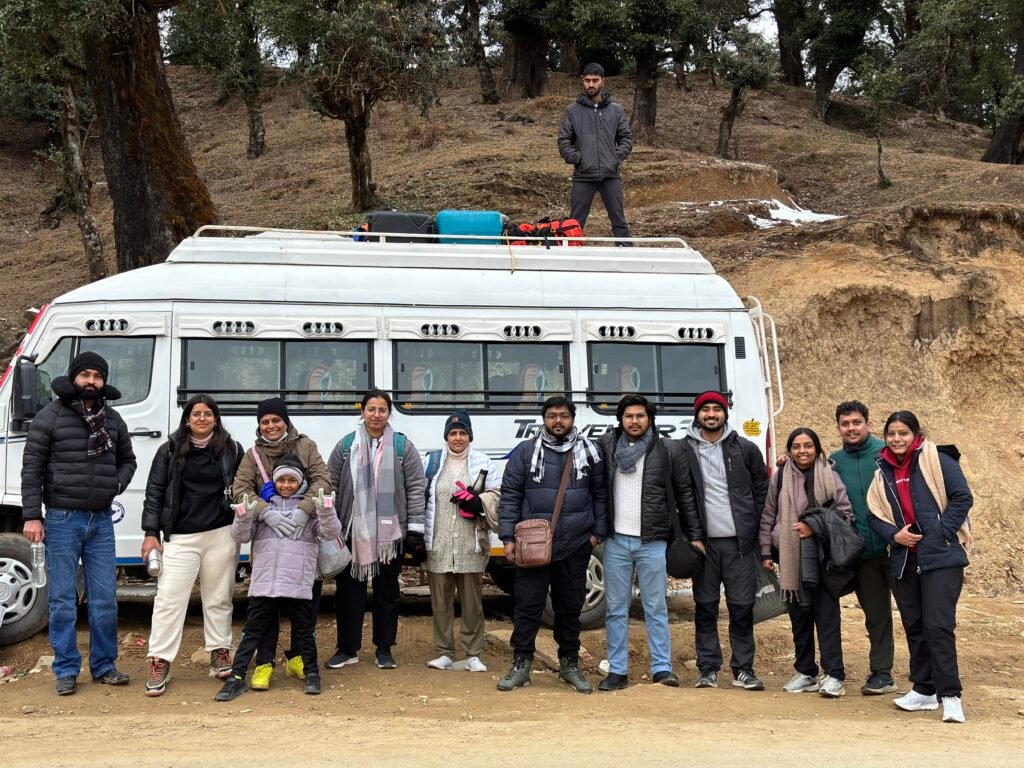
The Valley of Flowers trek was a surreal experience! The trail in July was full of vibrant blooms and misty hills. Though a bit challenging for beginners, the scenic reward was totally worth it. I booked my Valley of Flowers package with Secure Travels, and everything—from the stay at Ghangaria base camp to the Hemkund Sahib visit—was smoothly organized. A must-do trek in Uttarakhand
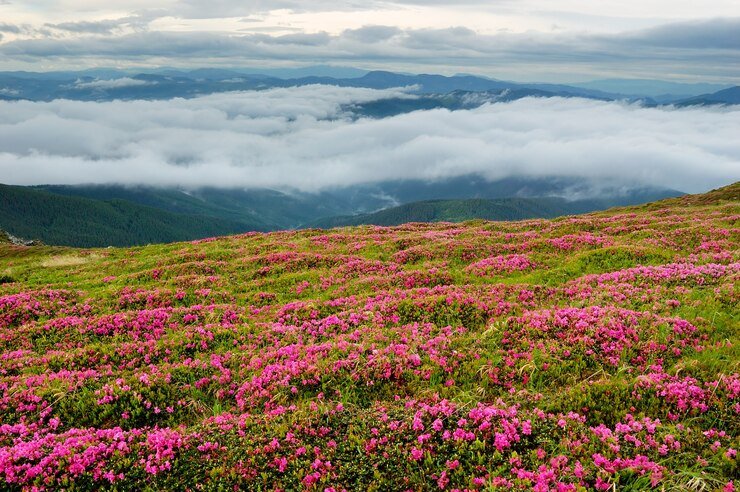
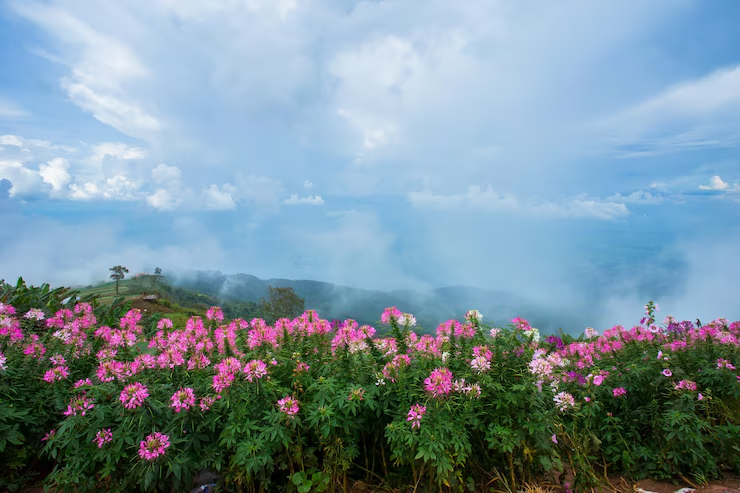
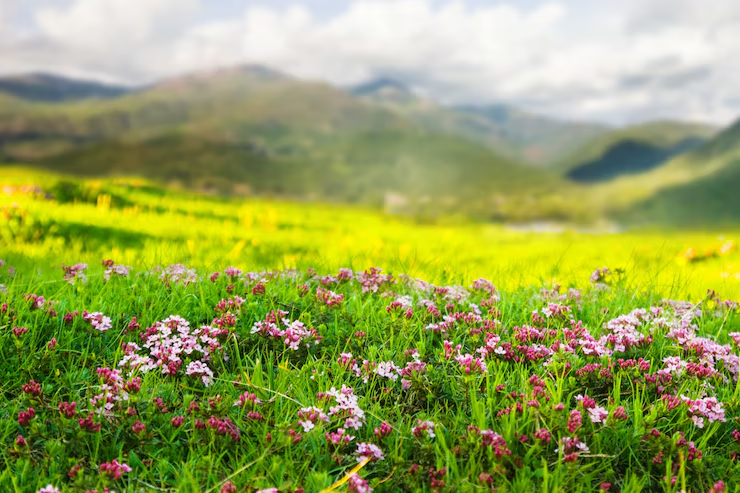
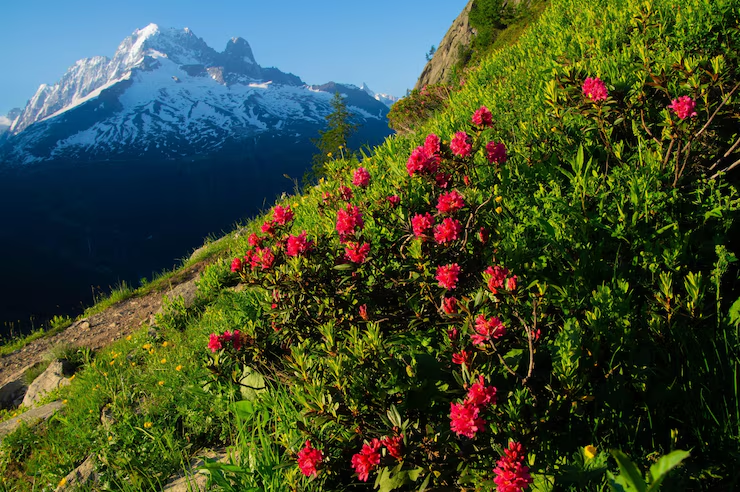
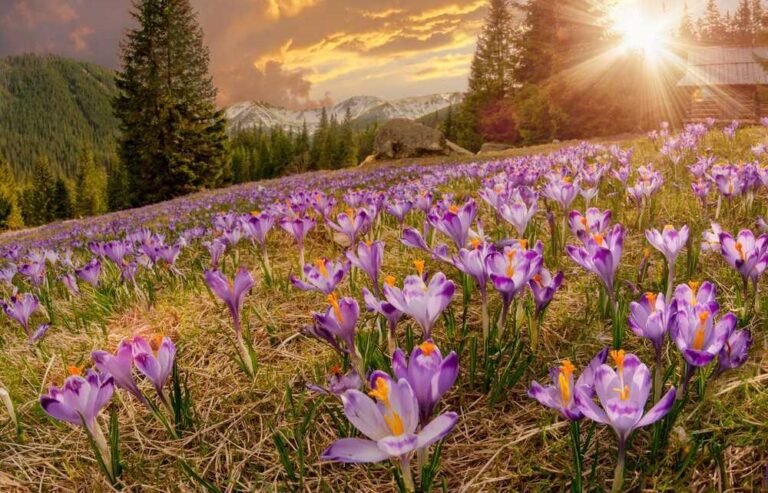
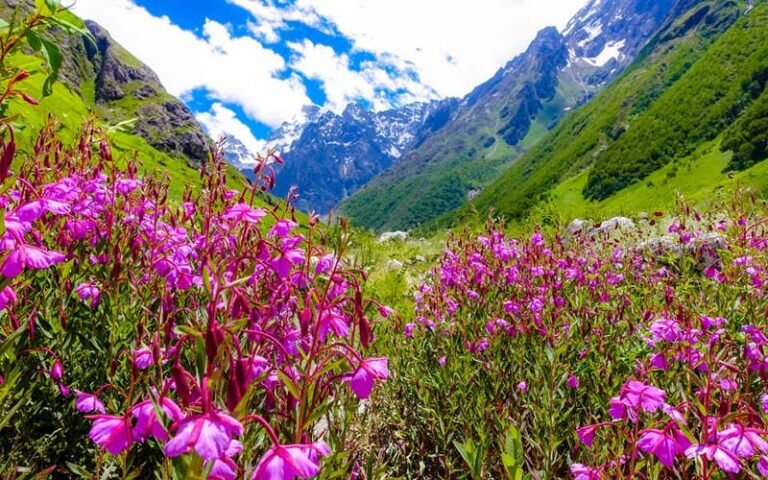
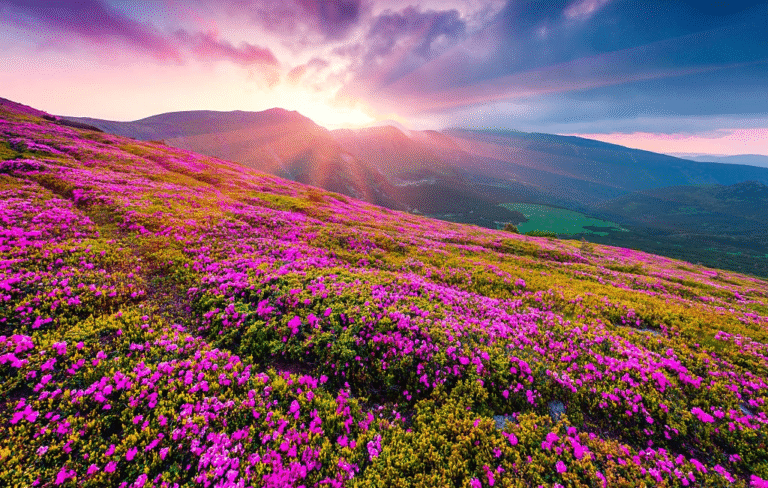

Related Treks
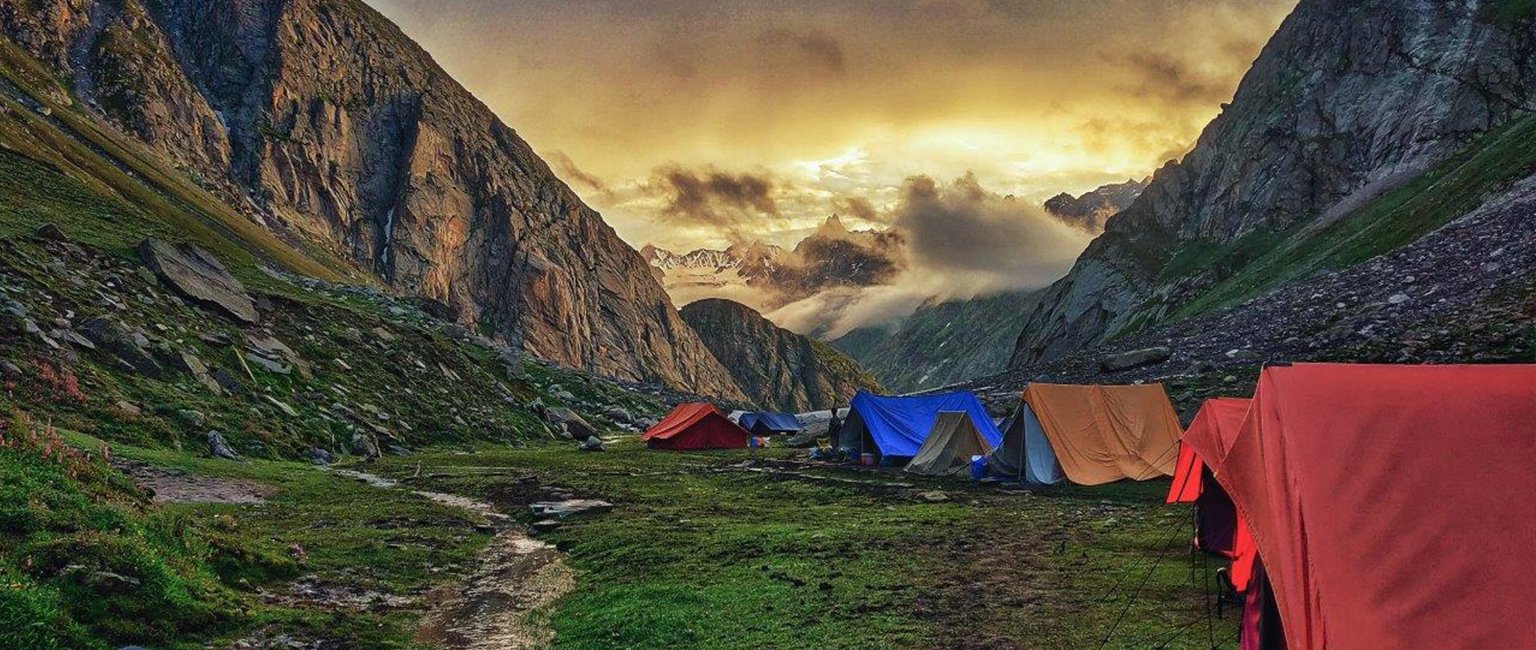
Hampta pass Trek
Region : Himachal Pardesh
Duration : 6 Days
Grade : Easy To Moderate
Rating: ★★★★★
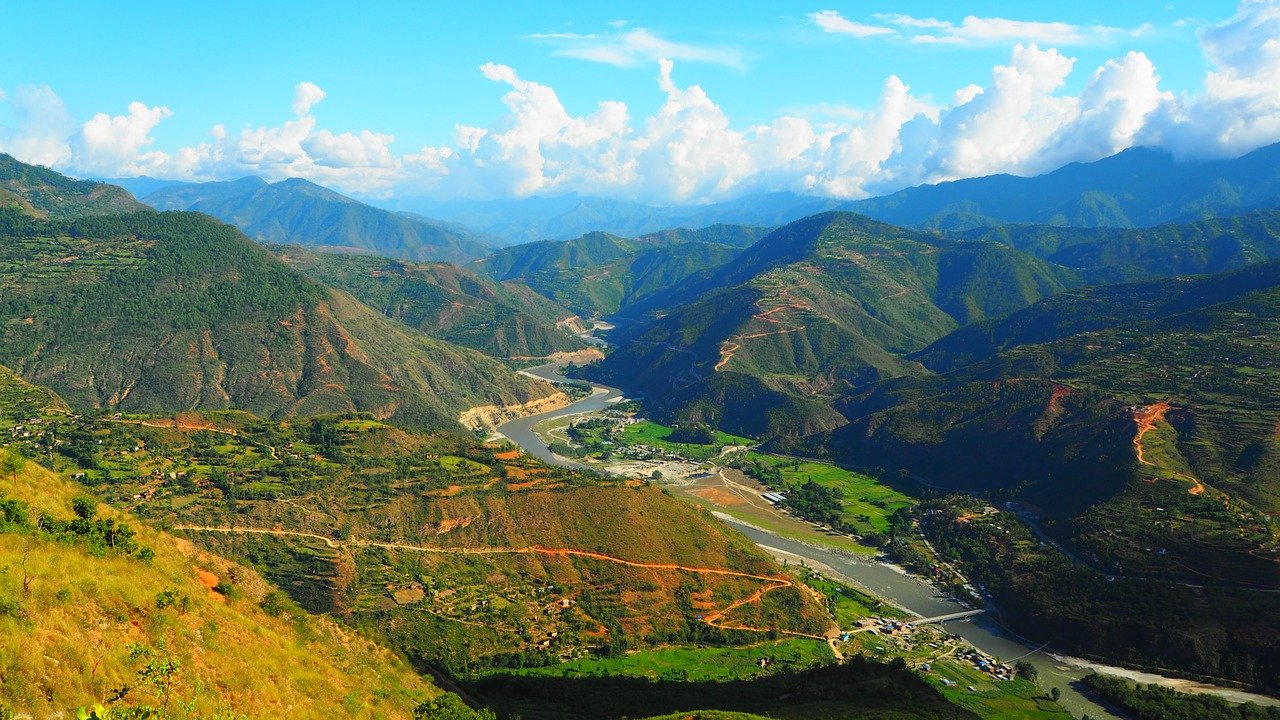
Har Ki Doon Trek
Region : Uttarakhand
Duration : 7 Days
Grade : Easy To Moderate
Rating: ★★★★★
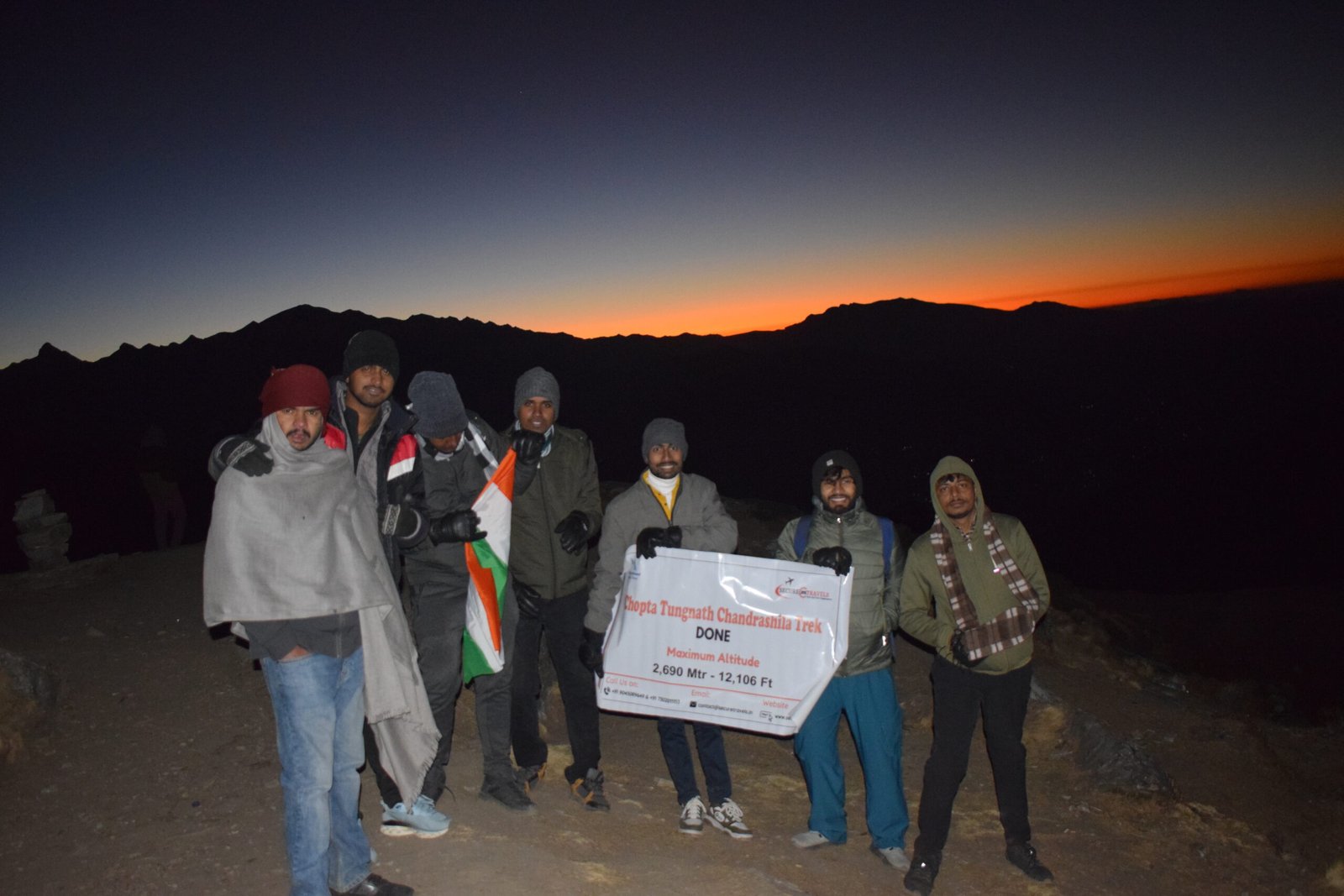
Chopta Tunghnath
Region : Uttarakhand
Duration : 3 Days
Grade : Easy To Moderate
Rating: ★★★★★
